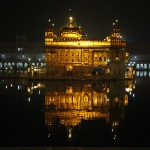Trekking Torres Del Paine Massif – Patagonia (13.03.16)
Sitting at the bottom of the world in Chile, but overlooking Argentina, is the moody, raw and massive Torres Del Paine National Park. Incessantly buffeted by winds like a clothes peg flicking around a bicycle wheel, this region is a Patagonian ‘must visit’ with an abundance of magnificent mountain scenery.

The feeling of wonder and isolation you get from travelling so far south is compounded when you step foot into the park’s wilderness. Sandwiched between Cordillera de Los Andes and Patagonia Steppe, the National Park’s central mountain massif dominates the horizon for hundreds of kilometres. Rather incongruously, the iconic Torres peaks stand like indestructible organ-pipe sentry guards surveying the far south.
Even when viewed from a distance, camouflaged by forests, sheer cliffs and glaciers, this most remarkable of Andean ranges effortlessly blends blue sky and air-coloured mountain terrain as if it were at the world’s southernmost horizon itself. Fickle and extreme, the weather can flip through each of the four seasons within a single hour.

I first visited the region twenty years ago, initially to explore the many roads, dirt tracks and lakeside walking paths. However, my favourite quickly became the full Torres del Paine Circuit trail, a circular mountain route that navigates the valleys, rivers, ravines, lakes, glaciers and mountain passes immediately below the Torres Mountain Massif region itself.
The beauty of this trail is that, depending on your energy, time frame and mood you can choose whether to follow the whole trail (which took my wife and I eight days), or elect to enjoy shorter, daily walks. In fact the direct trek up to the Torres (Circuito Las Torres) can be accomplished from Hosteria Las Torres in a 3-4 hour round trip. Equally treks from the western based Lago Grey, which sits below the enormous Glacier Grey, can be chosen on a daily basis, taking little more than a few hours to climb high above the glacier.

The ‘W’ Trek, which takes 3-5 days, depending on pace and side trips, is probably the most well known of this region’s hiking and camping treks. Following the lake shores, valleys and forests (south of the Torres De Paine mountain peaks) you have the opportunity to combine the charm of the lowlands with stunning views of glacier dominated peaks. Certainly in my experience the Ascensio and Frances Valleys (both part of the ‘W’ Circuit) give an exciting mix of wonderful scenery and, more often than not, a respite from the hurricane winds.

Although classic tourist images of the park invariably show blue skies, snow-capped peaks and ‘shepherd’s delight’ sunsets, to my mind it is the ever-changing, often brutal weather that enhances the National Park so dramatically. Whether staying in one of the charming lodges, trekking circuit huts or under canvas, the sense of being on the edge of the world is never far away. Sunshine and wildflowers give way to snow flurries and icy blasts at the drop of a woolly hat.
If you do decide to trek and camp you will soon be aware of Rule 1: ‘make sure your tent is set well away from your fire’, as the Patagonian winds can carry a spark several hundred meters in seconds. It is also worth factoring in that when choosing where to camp you should stay as close to the mountain as possible. If you pick a less sheltered spot, a powerful blast of prevailing wind is likely blow your tent away as if it were no more than a leaf.

The flip side of the wind though, is that in Patagonia there is never a shortage of bone-dry firewood.
As these photos show, in whatever capacity you visit the Park you are never far away from mountain views, glaciers, soft valleys, harsh weather and mind-expanding wilderness. Part of UNESCO’s Biosphere Reserve system, the park’s 1810sqkms is home to – apart from tourists, trekkers and tour guides – 26 species of mammal and 100 species of bird, all spread across a mix of Patagonian Steppe, pre-Andean shrubland, Magellanic deciduous forest, Andean desert and glacial peaks.



































